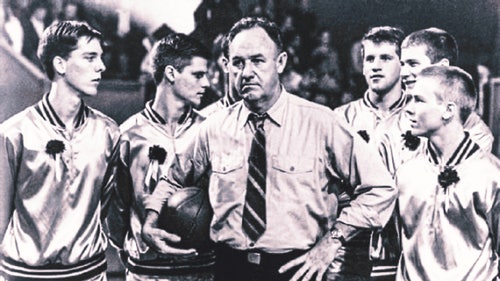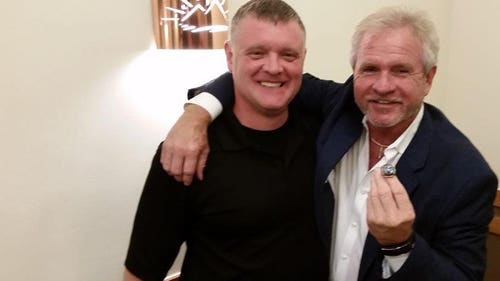
Pitching revived Athletics' Doolittle
After two years spent mostly recovering from a pair of knee surgeries, Sean Doolittle had his bags packed, his car loaded and his apartment cleaned out.
He was finally ready to head from extended spring training in Arizona to Sacramento, sure in his mind that it would be a short stopover before he headed down to Oakland to play first base for the Athletics.
Then, just a day before he was to leave, Doolittle swung through a high fastball and heard a pop in his right wrist.
“The tendon over here popped out and came over the bone,” Doolittle said, pointing to the bone on the outside of his wrist. “I was hoping it was just something weird, and then I went to put my glove on and I couldn’t do anything. It was this motion” — rolling his wrist — “that really bothered it. It was like a shooting pain up through the forearm.”
The pain in his wrist was exceeded only by the anguish of another lengthy rehabilitation, with its baby steps and false starts. It was a prospect Doolittle was not sure he could endure.
That was 16 months ago.
As Doolittle, 25, recounted this, he, too, marveled that he was doing so in the Athletics’ clubhouse, where he has been an unlikely contributor — on a roster full of them — in Oakland’s unlikely rise to playoff contention.
It’s not that nobody expected Doolittle to be here. He was, after all, the 41st overall pick five years ago who showed promise as a slick-fielding, power-hitting first baseman.
It’s that he’s doing it as a pitcher.
“It’s one of the better stories in baseball,” Oakland manager Bob Melvin said.
Doolittle, who had not pitched since he was an All-American two-way player at Virginia, picked up a baseball when he had to put his bat down after the wrist injury. It came at the suggestion of Oakland’s longtime director of player development Keith Lieppman, who thought playing catch might give Doolittle something to do while his right arm was ensconced in a cast that extended from his wrist past his elbow.
Last August, with his wrist still not recovered after three months of rest and rehab, Doolittle was ready to become a pitcher.
“I didn’t want to risk missing more time,” Doolittle said. “I was so close to being completely burned out from all the injuries that I asked for a chance to switch while I still had some fire left because I was about at the end of my rope.”
Doolittle went to the Arizona Instructional League last fall, sprinted through Single A, Double A and Triple A this season, and was called up to the Athletics in June. As a rare left-hander who has success against right-handers (they’re batting .208), he has established himself as a key, versatile cog in what has been baseball’s best performing bullpen this season.
Until he yielded a solo homer to Albert Pujols in Oakland’s 4-1 victory Wednesday, Doolittle had not allowed an earned run in 14 of his last 15 appearances.
“You see him in spring training, and I’m not really paying much attention to him because I know he’s not going to be on our team,” Melvin said. “We’re excited about his arm, but you lose sight of him. He’s in Single A, then all of a sudden he’s in Double A, then all of a sudden he’s in Triple A and the next thing you know, (General Manager) Billy (Beane) is recommending him to us. He’s here and he’s been terrific.”
In his debut, Doolittle struck out three of the four batters he faced against Texas, the best-hitting team in baseball. But his pinch-me moment came just after the All-Star break, when, with the bullpen fatigued, Doolittle was summoned to close out the Yankees.
He allowed a lead-off single to Alex Rodriguez, then struck out Robinson Cano, Mark Teixeira and Andruw Jones to seal a 2-1 victory.
“It wasn’t surreal when I was out there,” Doolittle said. “But reflecting on it, it reminded me of how many millions of dollars I just went through and how many home runs I just faced. That was really crazy.”
As Doolittle reminisced, it was with little animation. It is neither surprising, nor inaccurate, when Doolittle describes himself as quiet, thoughtful and introspective.
His blond hair — not close cropped, but above the ears — does not befit his family’s military background. His great uncle was the famed general and World War II pilot Jimmy Doolittle, and his father was an Air Force navigator.
After 9/11, his father was deployed to Oman, where he served aboard a KC-135 aerial refueling tanker. He would be gone for anywhere from three to six months at a time. Doolittle, who was beginning his sophomore year of high school in Medford, N.J., said it was not easy on the family, which included his mother, and younger brother and sister.
But the notion of sacrifice that had been instilled by his father at an early age resonated more as he began to recognize his talent in baseball. Doolittle traveled to northern Virginia to play on a travel ball team. He gave up basketball and passed on going to parties or other high-school functions with his friends if he had private hitting or pitching lessons.
He relied on the same ethic when he twice tore the patellar tendon in his knee, but whereas it had paid off with a scholarship to Virginia and becoming a high draft pick, the effort he put forth in rehab only seemed to lead to another setback.
It was fortunate, then, that when he injured his wrist, his younger brother Ryan, also a pitcher in the Oakland organization, was arriving in Arizona to rehab his own injury.
You could just see his body language, his demeanor — he was down,” Ryan Doolittle said. “It was one blow after another. We talked about `What do I do? Do I have the surgery? Do I take time?’ I said, you’re a left-hander who throws mid-90’s, why not take shot? If it doesn’t work, you can go back and hit. I just wanted to see him on the field again. I hadn’t seen him play in three years and now he’s hurt again. I told him if you put a jersey on and get on the field, what does it matter what position? This is the game you love.”
If his brother’s pep talk encouraged him, Doolittle’s initial workouts invigorated him. His arm felt alive and his fingertips in control of the ball. In his second Instructional League appearance, his fastball reached 97 mph.
“I surprised the hell out of myself and I’m sure a lot of people were surprised that I was throwing hard and I had a pretty good idea of where it was going,” said Doolittle, who gets by almost exclusively on his fastball. “That’s when the light bulb went on and I was like, ‘Oh, wow, I can actually have success with this.' ”
This was the first time he had truly committed to pitching. Doolittle, drafted by the Braves in the 39th round as a pitcher in high school, chose Virginia because he was promised he could do both. He wanted an organization to make the decision for him, and about 70 percent of teams that called him before the 2007 draft said they wanted him as a hitter.
Home in New Jersey last winter, he worked out with his brother at an indoor facility most mornings learning all over again. Ryan introduced Sean to a professional pitcher’s regimen and also reviewed video of their throwing sessions. Ryan, a right-hander, could just flip the video around to point out things he saw.
“When I see him pitch, I can’t stop smiling,” said Ryan, who is 18 months younger than his brother. “Ever since we could talk, this is what we’ve wanted to do in our dream. My goal is to catch up to him.”
The memories of last winter are inspiring, but now in a different way. Just before Sean saved the victory against the Yankees, Ryan underwent Tommy John surgery on his right elbow. He hopes to pitch off the mound by spring training and be back at Single-A Stockton sometime next season.
It will be a long journey from there to a mound in a major league stadium. But among Doolittles — and many others — it would not be the most unlikely one.










